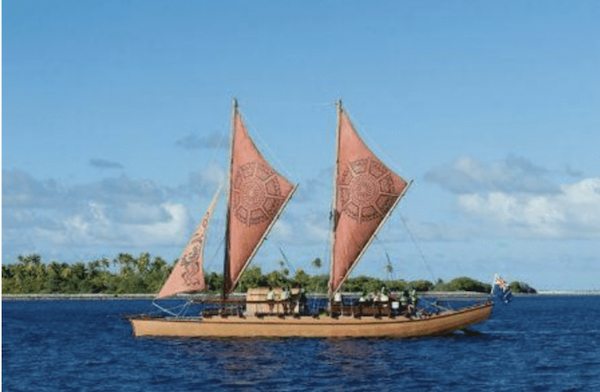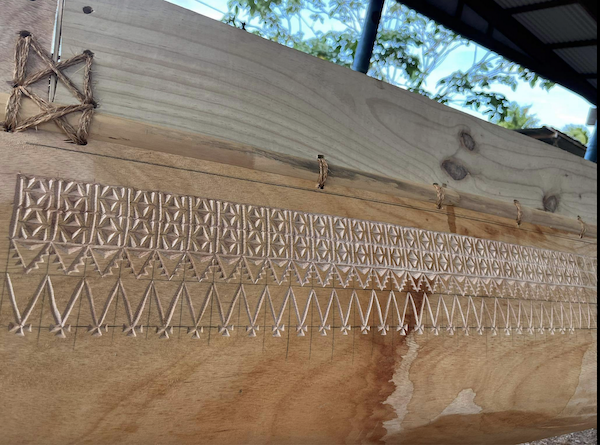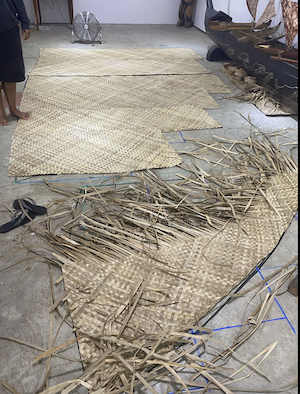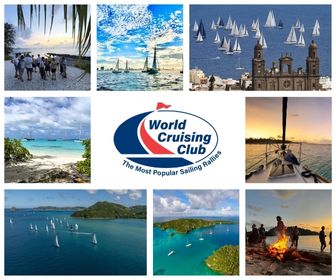Cook Islands: Vaka Project will preserve indigenous culture
For the first time in generations, a fleet of traditional canoes, known in Māori as vaka, are being constructed in the Cook Islands to highlight the value of preserving indigenous culture.
Published 3 years ago
Project Te Mana O Te Vaka (the power and prestige of the canoe):
“The project is about the perpetuation of vaka culture,” says Mike Tavioni, the leader of the project, who has been carving since he was a boy and studying the history of vaka for nearly as long. “The value of the vaka needs to be demonstrated, but the vaka culture is not only about the vaka. It’s about migration. It’s about discovery. It’s about our history, the origin of where we come from. And it’s about survival. It’s not just about the vaka. The vaka is the catalyst of all those things.”


- Traditional vaka (c) Te Mana o te Vaka FB page
Visitors are invited to observe and even participate in the historic project, which highlights the value of preserving indigenous culture – the antithesis of modern scourges such as pollution, climate change, and ill health.
The Story of the Vaka
Indeed, the story of the Cook Islands begins with the vaka. These were the sturdy, all-weather vehicles that enabled intrepid travellers to follow the stars across oceans. The vaka delivered people, pigs, and crops to islands half a world away from the homes they left behind.
For thousands of years after these islands were settled, vaka remained star players in the story of thislittle paradise. They were, and on some islands they remain, a means of travel to work, as essential as the car or bus that transports a breadwinner to an office job.
While vaka are still used by some fishers in outer islands and by sailors throughout the Cook Islands, the practice of canoe-building began dying a long time ago. Fishers on Rarotonga and in outer islands use aluminum boats powered not by sails and paddles but by outboard motors. On some islands, a traditional fishing vaka hasn’t been carved in a century.


- Traditional carving on the vaka (c) Te Mana o te Vaka FB page
The precarity of the practice motivated Tavioni and members of the Cook Islands Voyaging Society to design a project called Te Mana O Te Vaka, which translates as the power and prestige of the canoe.
Using Natural Materials
The project, largely funded by the Institute of Marine Resources at the University of the South Pacific, involves a team of people making six vaka using natural materials – tree trunks, coconut husk fiber, and pandanus leaves. They are making not only canoes but also sails, paddles, bailers, and sennit for rope, as well as fishing hooks, lines, and lures. Each element requires significant amounts of time and energy.


- Using natural materials (c) Te Mana o te Vaka FB page
“We talk a lot about sustainability, but you can’t be sustainable if you’re only using throwaway stuff,” says Evangelene Wong, vice president of the Cook Islands Voyaging Society. “So this is about really recognising the value of things.”
Te Mana O Te Vaka began with Tavioni selecting experts and carvers to work alongside him. Two months before the project’s launch, a team of volunteers began collecting resources from around Rarotonga. They beat the husks of 100 coconuts and buried them in the sand for a month. They selected and cut down suitable trees. They hung pandanus leaves to dry in the sun.
New Zealand’s Ministry of Foreign Affairs and Trade sponsored the cost of travel for artists based overseas – weavers, a carver, and two of Tavioni’s former apprentices, who began learning to carve when they were 12 and 13 years old – who flew to Rarotonga to share their knowledge with the project.
How to see the Project
Te Mana O Te Vaka began in a ceremony on Friday, 16 September 2022 and carving and weaving began the following Monday. The team has been working from 9 am to 4:30 pm on weekdays since then. Visitors can see the canoe building at the Gallery Tavioni, Back Road, Atupa. The ocean-going vessel Marumaru Atua is currently dry-docked for the cyclone season until the end of April, next to the CITC on the main road, Avarua.
The project should be completed by the end of January 2023 with the vaka launched in early February followed by sea trials and then a fishing competition organised into five categories: deep-sea fish, flying fish, soldierfish, and fishing with a locally made hook. Tavioni is currently seeking donations for a prize purse to incentivise fishers to enter.
When completed, the vaka will be used to impart teachings about moon phases, seasons, tides, winds, and navigation. Ultimately, they will be gifted to fishers in outer islands where economic opportunities are limited.
“The whole project is about canoe building and canoe using,” Wong says. “So we’re not building these to go in museums. We’re building them to be used.”
For more information contact Te Mana O Te Vaka through their Facebook page or by sending an email to cookivs@gmail.com with TMOTV as the subject.
………………………………………………………………………………………………………………………………………….
Related Links:
Te Mana o te Vaka Facebook page
Cook Islands Tourism Corporation
………………………………………………………………………………………………………………………………………
The opinions expressed in this article are the author’s own and do not reflect the view of Noonsite.com or World Cruising Club.
………………………………………………………………………………………………………………………………………
Find out all news, reports, links and comments posted on Noonsite, plus cruising information from around the world, by subscribing to our FREE monthly newsletter. Go to https://www.noonsite.com/newsletter/.
Related to following destinations: Cook Islands, Rarotonga, Southern Cook Islands
Related to the following Cruising Resources: Environment, General






